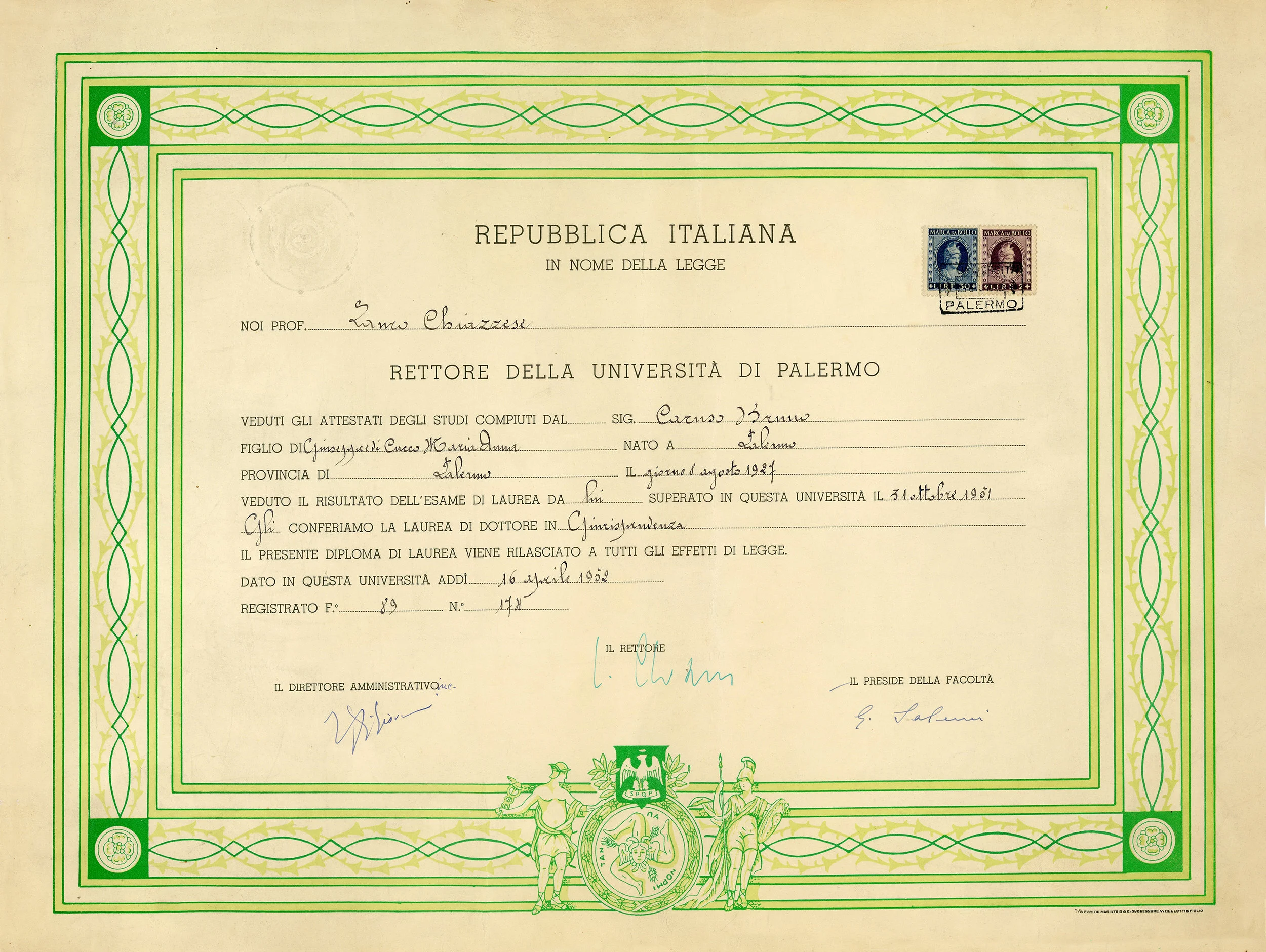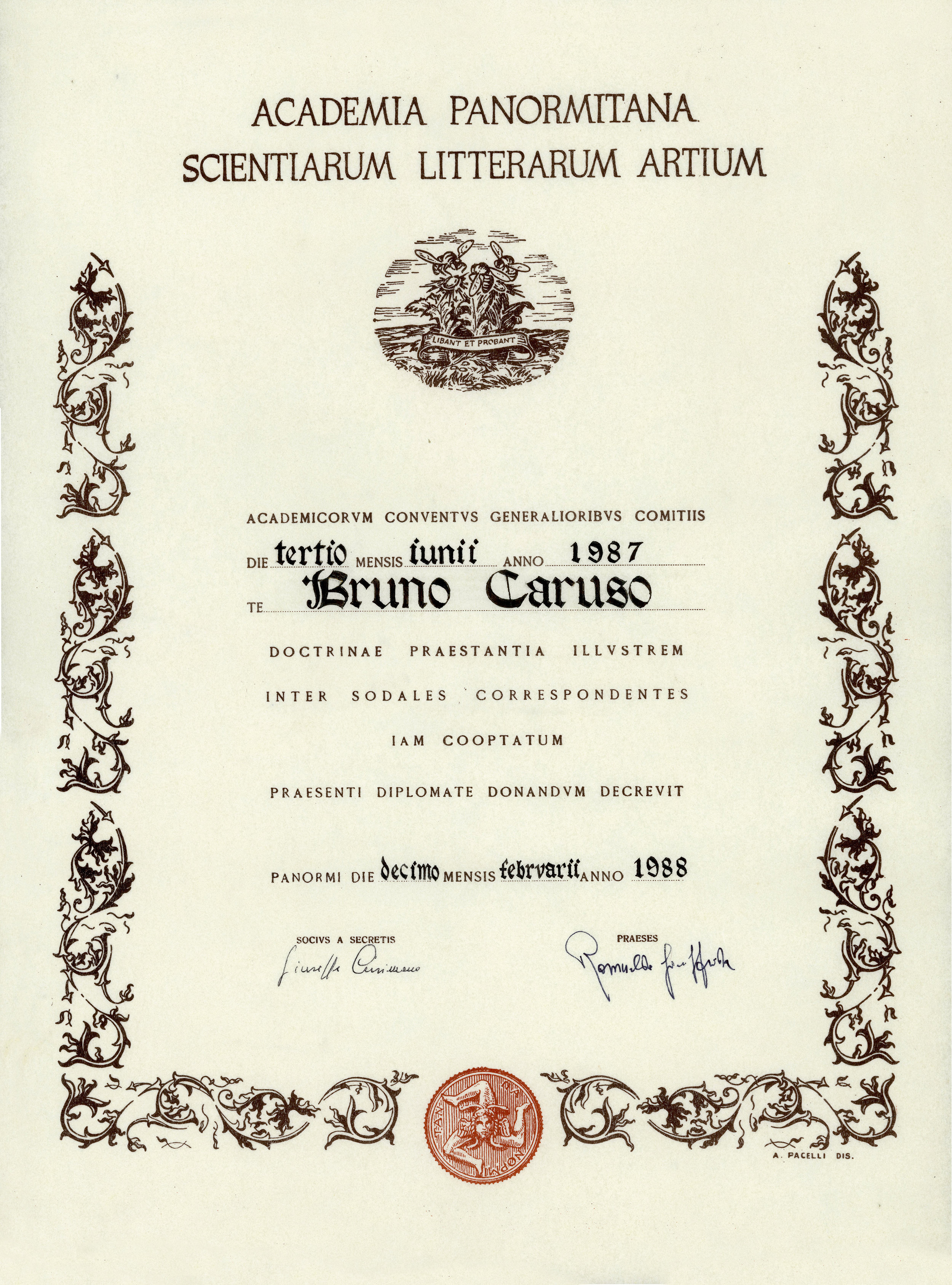"When I die I want my ashes to be scattered in the road amongst the passing cars. I don't think about how I will be remembered, I've just tried to live my life doing everything as best as possible, even though I know I’ve often fallen short."
Caruso was born on August 8th 1927 in Palermo, Sicily. He started painting under the stern gaze of his father as early as age five, copying works of the ancient masters, in particular those of Leonardo, Mantegna and Pisanello. He studied Classics at University until disrupted by WWII, which in turn inspired his first personal collection: 'A Study Of Disaster'. In the immediate post-war period he journeyed through Paris, up to Prague, Munich, and Vienna, befriending Thomas Mann and Jean Paul Sartre, completing his second collection inspired by George Grosz entitled 'Deutschland uber alles', and carrying out numerous studies of the works of Klimt and Schiele.
Back in Palermo the local peasants fighting for the rights to unoccupied land became the subject of his third collection, during which he struck up an intimate friendship with Li Causi, the rebel leader. Over the next few years he campaigned actively for the cultural emancipation of Sicily, working to contain the rise of the Mafia, and halt political corruption. He took a job in a Palermitan psychiatric unit for a great part of the 1950's, producing a damning study on the conditions of the wards and the use of medieval curing techniques that contributed to a complete overhaul of the system.
The rest of the decade was spent travelling through Eastern Europe, and across to the Middle and Far East, examining third world poverty, painting on the subject of famine, overpopulation, and threat of atomic war. He spent long stretches in Syria, also visiting India, Thailand, and Japan before moving to Iran to study Persian calligraphy. On his return to Sicily, Caruso took on the role of Art Director at well regarded cultural magazines including 'Ciclope' and 'Sicilia', using the friendships forged on his travels with photographers such as Brassaï and Richard Avedon to illustrate their pages.
The Sixties saw his focus turn to America. Having already seen much of his work head Stateside - including a private exhibition curated by cosmetics industrialist, Helena Rubenstein, and profiles In Fortune, Life & Harpers Baazar - he accepted offers of accommodation from fellow painters Ben Shahn and Jack Levine, arriving in time for the Kennedy assassination. The shock of that moment, coupled with meetings with Malcolm X and Tennessee Williams formed the base of many of the political illustrations featured in ‘Tigre di Carta’ (1964)
As a card carrying Communist his relationship with the States grew ever more strained. He saw ventures such as the moon landings as a gross misuse of public funds and was so shocked by the abuses of power that took place in Vietnam that he offered his services to the North Vietnamese government, producing a portfolio which documented the many atrocities he witnessed.
Throughout his life Caruso has rubbed shoulders with the men who most influenced modern times - from Jean Paul Sartre to Camus, Pablo Picasso to Chagall, Ho Chi Minh to Pan Van Dong, Antonioni to Fellini - but as the promise of Communism flickered and died, it left the artist floundering in an ideological vacuum. Flower baskets and Roman ruins became his favoured subjects and, although his popular market increased, the fire that drove the indignation and wonder of his youth was all but extinguished.
Caruso died on 4 November 2018. He was 91 years old.













































